Must see Bueng Kan: Natural and cultural sites

Bueng Kan has pristine natural beauty and cultural treasures. Start with the iconic Naka cave, a sandstone massif offering breathtaking views of the cave. Besides, the scenic waterfalls can captivate any nature enthusiast. This article aims to indicate the top destinations in Bueng Kan, Thailand.
Must see Bueng Kan
Naka Cave
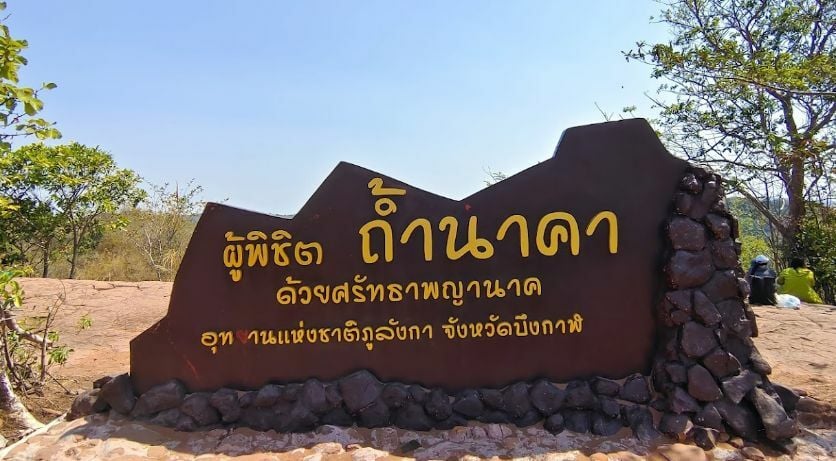
Naka Cave, also known as Snake Cave, is one of Bueng Kan’s fascinating attractions. Found within Phu Langka National Park, it features unique rock formations resembling a giant serpent. Visitors often marvel at the natural beauty and mythical allure of this site.
The cave is reached via a moderate hike, which adds an element of adventure. Trails take you through lush forest and offer scenic views. The park’s varied terrain can be challenging but is accessible to most visitors with proper preparation.
Naka Cave holds cultural significance, with local legends attributing spiritual importance to its snake-like formations. The site is often included in religious tours due to its mystical connotations. Tourists may encounter local guides who can offer deeper insights into the cave’s folklore.
This attraction enhances Bueng Kan’s appeal to those interested in unique geological features and cultural history. Seasonal visits are ideal, with the dry months from November to April being perfect for exploring. Facilities near the park, including shops and snack stalls, ensure a comfortable visit.
Exploring Naka Cave provides a blend of adventure, natural beauty, and cultural depth—making it a must-see for visitors to Bueng Kan.
Kaeng Ahong or Wat Ahong Silawat, Bueng Kan
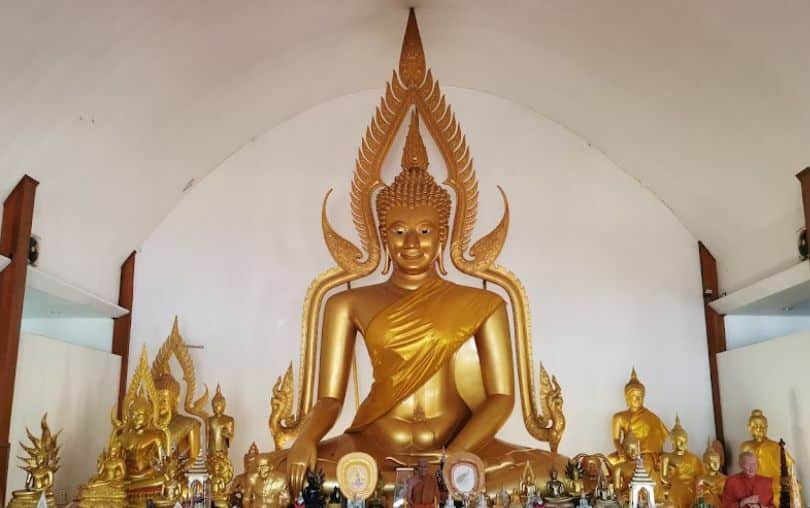
Kaeng Ahong, also called Wat Ahong Silawat, stands on the banks of the Mekong River in Bueng Kan. It’s renowned for being the deepest point of the Mekong, creating the “Navel of the Mekong.” This natural phenomenon attracts many visitors and is especially captivating during high tide when the strong currents are visible.
The temple complex at Wat Ahong Silawat offers a tranquil atmosphere for those seeking spiritual solace. The main temple showcases traditional Buddhist architecture surrounded by serene gardens. Monks often conduct ceremonies, and the temple is a hub for local cultural activities.
Visitors can also find several amenities near the temple. Stalls sell local snacks, refreshments, and small souvenirs. The site is easily accessible by road, with clear signposts leading from downtown Bueng Kan. The best time to visit Kaeng Ahong is during the late afternoon to catch the scenic sunset over the Mekong River. This destination seamlessly combines natural beauty and cultural depth, making it a notable spot in Bueng Kan.
Wat Photharam (Wat Luangpho Phra Yai), Bueng Kan
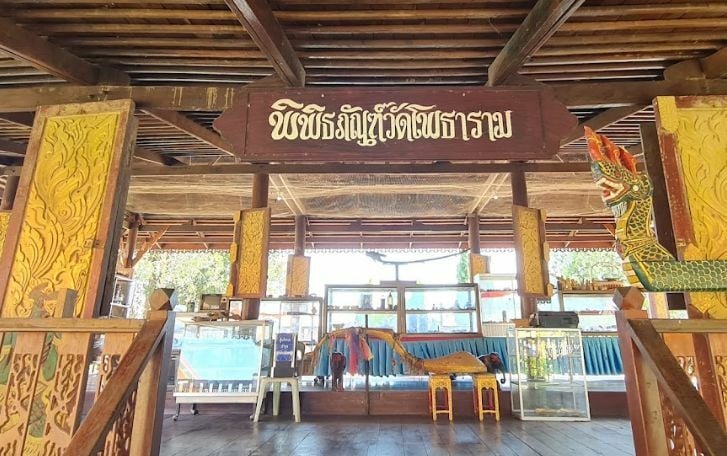
Wat Photharam, located 5 kilometres from Amphoe Mueang in Bueng Kan, is a significant cultural site. The temple sits along Highway No. 212, connecting Bueng Kan to Nakhon Phanom. It houses Luangpho Phra Yai, a revered Buddha image in a subduing Mara posture. The statue measures 5 feet and 4 inches wide across the lap, sitting on a rectangular platform restored in 1994.
The local community celebrates Luangpho Phra Yai twice a year. During the third lunar month, they hold the Bun Khao Chi merit tradition. They also organise the Prasat Phueng wax castle offering and the bathing rituals of the Buddha image after the Songkran Festival.
The Buddha image and rituals attract many visitors, adding to Bueng Kan’s cultural richness. Wat Photharam offers a deep cultural experience, blending history, architecture, and local traditions.
Namtok Chet Si
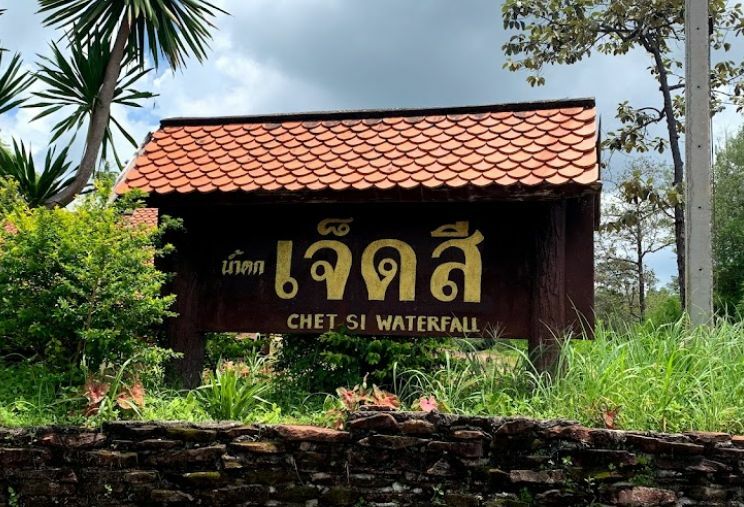
Namtok Chet Si, or the Seven-Coloured Waterfall, is nestled in the Phu Wua Wildlife Sanctuary in Bueng Kan. This natural wonder stands out, particularly during the rainy season when the waterfall is at its most splendid. Originating from the Huai Kaam stream, the water cascades down a majestic sandstone cliff, creating a long, mesmerising spread.
As the water flows over the cliff, it produces a fine spray. When sunlight hits this spray, a rainbow-coloured effect, which gives the waterfall its name, appears. This visual spectacle is a major draw for tourists and nature enthusiasts alike.
The surrounding area offers more than just the waterfall. The sanctuary itself is home to diverse wildlife and lush vegetation. Visitors can explore well-maintained paths and enjoy birdwatching, hiking, and taking in the serene natural environment. The site emphasises conservation, aiming to preserve the pristine beauty of Bueng Kan.
Namtok Chet Si combines visual beauty with ecological importance, making it a must-see destination in Bueng Kan.
Chaomae Song Nang Shrine, Bueng Kan
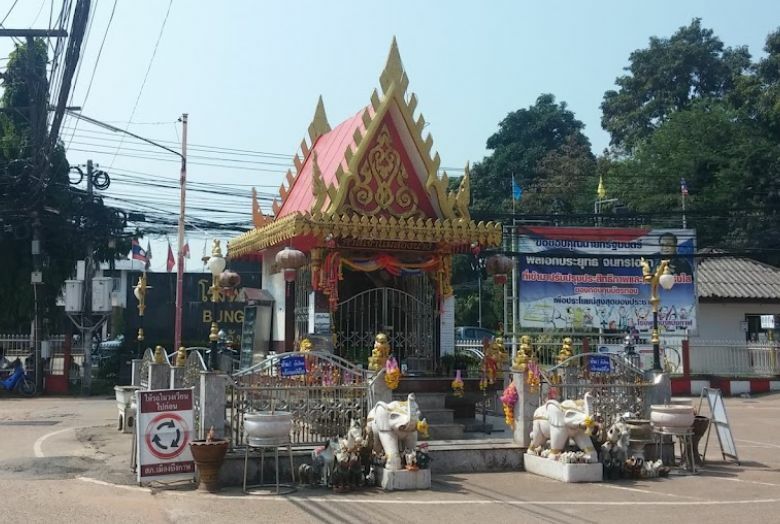
Chaomae Song Nang Shrine, found at Bueng Kan Hospital, holds significant local importance. Locals believe the water deity once caused annual deaths along the Mekong River banks. They perform rituals to honor Chaomae Song Nang, seeking water safety, business success, and protection for boat journeys. Prayers involve offering flowers, joss sticks, candles, garlands, young coconut, and red syrup drinks.
Positioned on the Mekong Riverside in Tambon Khai Si, 21 kilometres from Amphoe Mueang Bueng Kan, the shrine is part of a beautiful and extensive temple complex. The temple enshrines Phra Phuttha Khuwanan Satsada, a brass Buddha image with similarities to Phra Phuttha Chinnarat. This site is also believed to mark the deepest spot of the Mekong, known as the “Navel of the Mekong,” with a depth of about 196 metres.
Notably, the water’s current forms a recurring large cone during the flooding season, producing a unique sound as it breaks and reforms. This phenomenon lasts all day, captivating visitors. In contrast, the dry season reveals islets from March to May, adding another layer of appeal to this Bueng Kan destination.
Latest Thailand News
Follow The Thaiger on Google News:


























